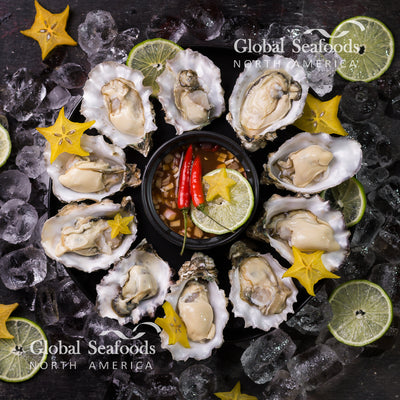Oyster Pearls
Oyster pearls are among nature's most beautiful creations, formed over time with care and precision. These shimmering gemstones, whether natural or cultured, are a testament to patience and the intricate relationship between marine life and human innovation. This article dives deep into the timeline and effort it takes to grow pearls, highlighting the science, artistry, and care involved in their creation.
How Long Does It Take for Pearls to Grow?
The process of pearl formation is not instantaneous; it requires patience and the right conditions.
-
Natural Pearls:
- Formation time: 5 to 20 years.
- Because they are formed without human intervention, natural pearls are rare and often take decades to achieve a desirable size and quality.
-
Cultured Pearls:
- Formation time: 6 months to 2 years.
- Pearl farmers control the conditions, significantly reducing the time required to produce high-quality pearls.
- The time varies depending on the type of pearl and the oyster species. For instance:
- Akoya Pearls: Typically take 8 to 16 months.
- South Sea Pearls: Can take 2–3 years for their larger size and golden hues.
- Freshwater Pearls: Often harvested in 12–24 months.
What Does It Take to Grow a Pearl?
Pearl formation is influenced by several natural and controlled factors:
1. The Oyster or Mollusk
- Species: Certain species like Pinctada fucata (Akoya oysters) or Pinctada maxima (South Sea oysters) are preferred for their nacre quality and size.
- Health: Only healthy oysters are used for pearl farming.
2. Environment
- Water Quality: Clean, nutrient-rich waters are essential for the oyster’s health.
- Temperature: Oysters thrive in warm water, typically around 20–25°C (68–77°F).
- Salinity: Stable saltwater conditions promote optimal nacre secretion.
3. Human Intervention (Cultured Pearls Only)
- Nucleus Implantation: A small bead or tissue is inserted into the oyster, acting as the base for nacre formation.
- Monitoring: Oysters are carefully monitored for health and nacre quality during their growth period.
- Maintenance: Farmers clean oysters and protect them from predators, diseases, and environmental stressors.
The Science Behind Pearl Formation
The journey of a pearl starts with the oyster's natural defense mechanism:
- Irritant Entry: A foreign object, such as a grain of sand or a parasite, enters the oyster’s shell.
- Nacre Secretion: The oyster secretes nacre, a mix of calcium carbonate and proteins, to coat the irritant.
- Layer Formation: Over time, layer upon layer of nacre is added, creating a smooth, lustrous pearl.
For cultured pearls, the process is replicated by inserting a nucleus, usually a polished bead made from shell material, to act as the irritant.
Factors Influencing Pearl Quality
- Luster: The reflection and glow of light on the pearl’s surface.
- Size: Larger pearls require more nacre layers, which takes longer to form.
- Shape: Perfectly round pearls are rarer and more valuable.
- Surface: Blemish-free pearls are highly sought after.
Why Does It Take So Long to Grow Pearls?
The process requires both patience and precision. Oysters need time to:
- Produce layers of nacre thick enough to ensure durability and beauty.
- Maintain health and survive in their environment while secreting nacre.
Pearl farming also includes periodic cleaning and moving oysters to nutrient-rich waters to ensure optimal growth.
Pearl Farming and Sustainability
Modern pearl farming focuses on sustainable practices to preserve marine ecosystems. According to the World Jewelry Confederation (CIBJO), responsible pearl farming can even benefit the environment by encouraging clean water practices and protecting biodiversity.
- Eco-Friendly Practices: Farmed oysters filter water naturally, improving water quality in the surrounding ecosystem.
- Reduced Overfishing: Cultured pearls reduce the demand for natural pearls, protecting wild oyster populations.
Learn More About Pearls and Oysters
Pearls wouldn’t be possible without oysters. Discover the source of these treasures by exploring these collections and products from Global Seafoods:
- Oysters Collection
- Carbajal Oysters
- Cliff Point Petite Oysters
- Tidepoint Oysters
- Willapa Bay Oysters
Watch & Learn More
Get a closer look at oysters and seafood culture on the Global Seafoods YouTube Channel. Explore engaging shorts and insights about seafood and its fascinating processes.
Call to Action: Shop Oysters and Discover Pearls
Experience the beauty and craftsmanship of oyster pearls by exploring fresh oysters from Global Seafoods. Each product brings you closer to the incredible journey of these marine wonders.
Shop Now:










